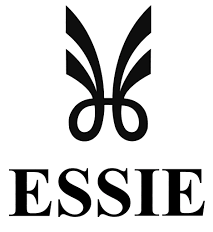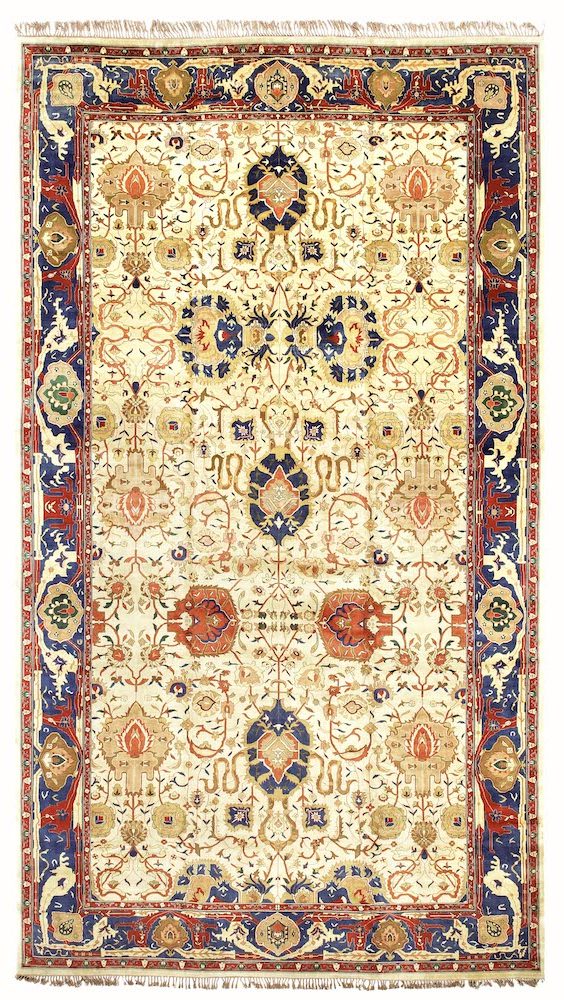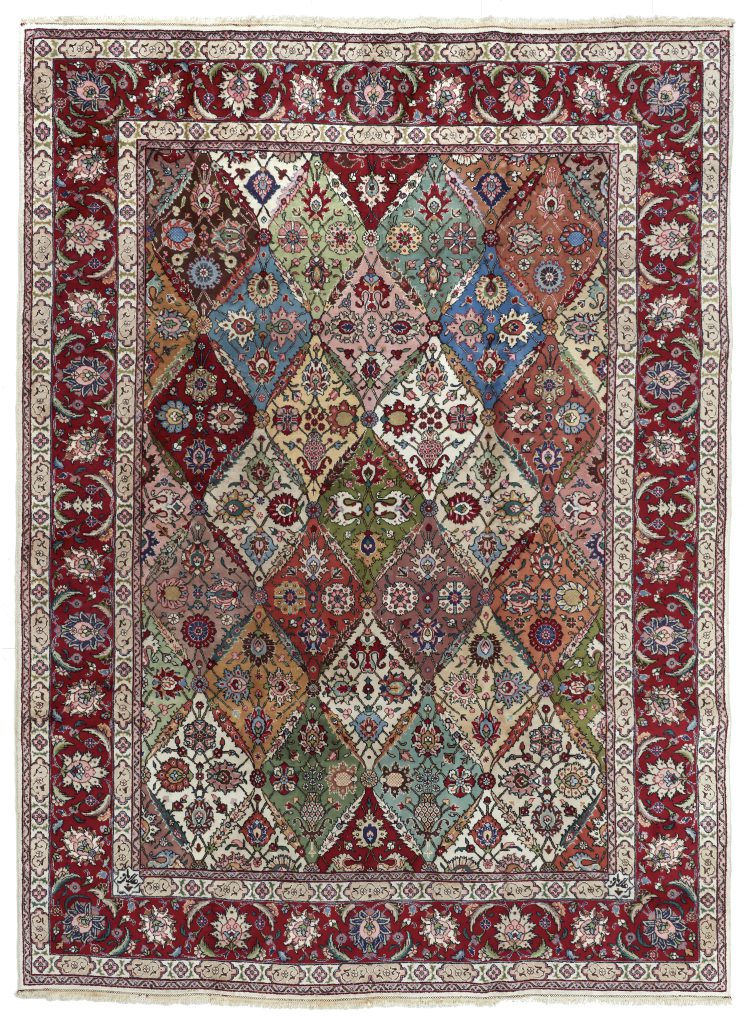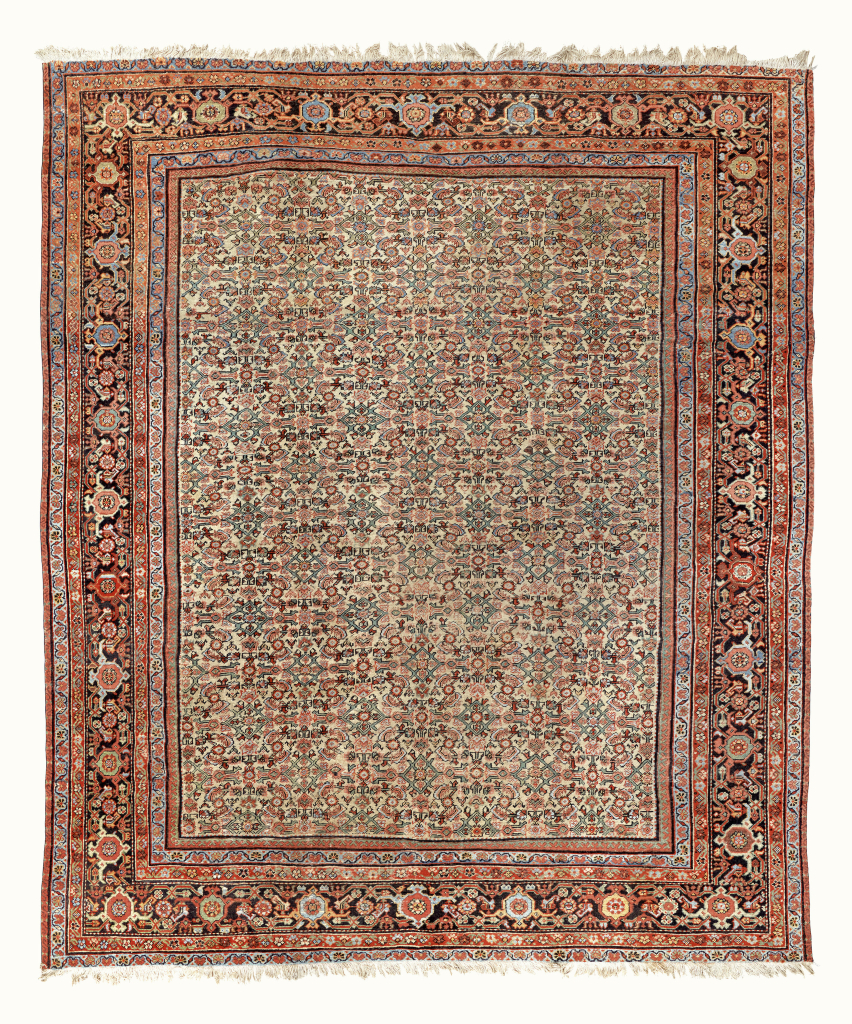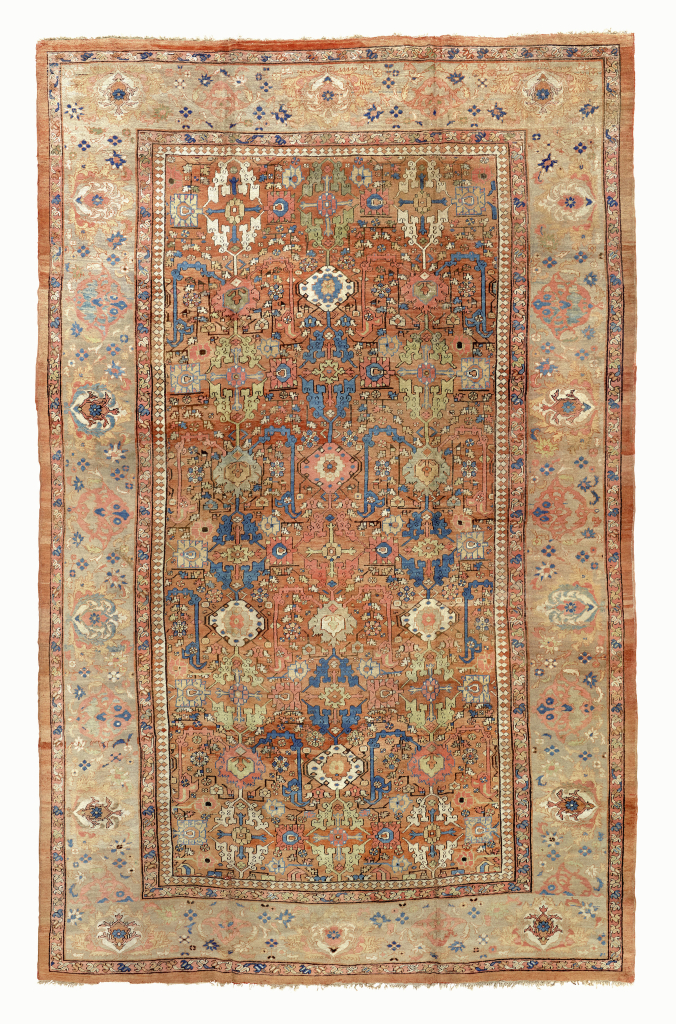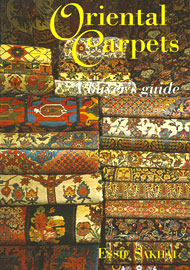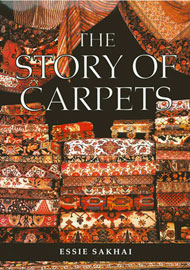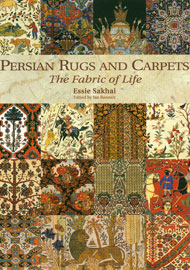A Large Indian Agra Carpet
Rug #5037A Fine Agra Carpet, North India, Wool on Cotton Foundation.
Late 19th Century
The ivory field with an all over design displaying off set columns of terracotta, ivory or blue bold palmettes linked by angular vines issuing small palmettes, flower heads and leaves supported by curvilinear flowering vine tendrils supported by cloud bands, within a blue border enclosing continuous palmettes linked by red and ivory angular arabesques issuing diminutive leaves
Indian carpet production during the 17th Century Moghul era was from small Imperial ateliers made chiefly for royal or aristocratic commissions. Such production effectively ceased by the early 19th Century. From the mid 19th Century Indian carpet production began to revive as a much more commercial activity and predominantly stemmed from the country’s jails. Lahore jail produced carpets that were displayed at the International Exhibition in London in 1862 and by the time of the 1888 Glasgow International exhibition, the list given of Indian places producing carpets as detailed by a certain T.N. Mukherji in literature written on the exhibits was very extensive. Significantly, the list included private manufactories as well as over twenty jails. The most important and significant of these jails were Agra, Lahore, Yeraoda, and Montgomery, identified for the production of particularly fine decorative carpets. Mukherji also stated that ‘the old Persian patterns are generally copied in the jails.’ The earliest jail products were copies of classical Persian of the 16th and 17th centuries selected from the collection of the Maharaja of Jaipur. The 1892 Vienna exhibition catalogue of carpets also provided a rich source of material of designs for this rapidly developing Indian carpet producing industry. Apart from the exceptionally high quality of the materials including the dye stuffs, the Jail designs rapidly evolved, and unique ‘takes’ on Classical models began to appear. These ‘takes’ were to become highly sought after in Western markets and there is no doubting their individual designs are stunningly potent and appealing, establishing the ‘jail’ group of Indian carpets as highly important in the history of carpet production. This Indian Agra carpet displays all the very best attributes of the ‘Jail’ genre.
The design is firmly based on Classical Persian styles of design with the formal arrangement of bold palmettes linked by tiers of vines with the inclusion of cloud bands. The open airy rendition is typical of the new Indian Agra interpretation of Classical iconography. The use of ivory as a background colour is a relatively rare back ground colour in Indian Agra carpets though when seen, serves to enhance the power and visual beauty of the composition with the colours carefully selected for the pattern details to present an exceptional decorative harmonic image. Shades of deep blue juxtaposed with pale ochre and red detailing as seen in the main palmettes create a focal point. The more pastel tones of terracotta red, browns, ochre and pale salmon sympathetically support the blue central elements and present a soft subtle decorative appearance. The border treatment displays a style of drawing characteristic with Indian Agra tradition, epitomised by the angular drawing of the arabesques complementing the more curvilinear drawing of the repeat palmettes. The deep saturated blue background of the border supported with saturated red arabesques and green detailing, combines effectively with the more pastel toned pattern elements serving to frame the main field action and give credence to the overall harmonic design. The varying scales of the pattern motifs fit perfectly with the grandiose scheme, particularly considering the large size of this magnificent Indian Agra carpet. This large Indian Agra carpet is a superb example of ‘jail’ carpet production and displays all the attributes associated with the genre.

Delivery
Delivery
Enjoy Complimentary Express Delivery at Checkout
Free express next-day delivery on all UK orders.
Free express delivery on all international orders above £2,000.
Estimated Delivery Times
Please allow between 1-3 days for UK, Europe and United States destinations and 5-7 days for Far East, South America, Middle East destinations.
Please note that orders placed after 12pm (UK time), on the weekend, or during holidays will be processed on the following business day. You will be provided with a shipping tracking number once your order has been shipped.
Collection from our Mayfair London showrooms
In-store collection will be ready within 1 business day. To collect in-store you will be required to show confirmation e-mail, official photo ID (passport or driving license) and the payment card used for the order. If someone else is collecting on your behalf, please make sure they bring a letter of authorisation that permits this person to collect on your behalf, official photo ID of the purchaser and of the person collecting and confirmation e-mail.

Exchanges
Exchanges
Essie Carpets offers clients a lifetime exchange service on any items purchased from us should you wish to change your carpets at any time in the future, subject to the item being in good condition; this can be particularly useful when redecorating your home, or when an upgrade in type or quality is desired.

Payment
Payment
Payments are accepted via credit card or debit card with a valid billing and shipping address*. Accepted credit cards are Visa, American Express, and Mastercard. When placing an order, your billing address must correspond to the address of your credit card, or we will not be able to process your order.
Bank Transfers are also accepted; in order to pay by Bank Transfer, please contact our Client Services via telephone at +44 20 7493 7766 or e-mail at sales@essiecarpets.com.
All transactions are secured. The Essie Carpets website is provided with an SSL encryption system to protect personal and payment data.
Similar Carpets
-
 Fine Persian Tabriz 'Vase Design' Carpet - Signed 340 x 256 cm
Fine Persian Tabriz 'Vase Design' Carpet - Signed 340 x 256 cmRug #7151 Fine Persian Tabriz 'Vase Design' Carpet - Signed POA
Fine Persian Tabriz ‘Vase Design’ Carpet – Signed
-
 Very Fine Persian Kerman Carpet - Old - Ardabil Design 555 x 334 cm
Very Fine Persian Kerman Carpet - Old - Ardabil Design 555 x 334 cmRug #7150 Very Fine Persian Kerman Carpet - Old - Ardabil Design POA
Very Fine Persian Kerman Carpet – Old – Ardabil Design
-
 Fine Unusual Persian Faraghan Carpet 405 x 350 cm
Fine Unusual Persian Faraghan Carpet 405 x 350 cmRug #7149 Fine Unusual Persian Faraghan Carpet POA
Fine Unusual Persian Faraghan Carpet
-
 Fine Elegant Ziegler Carpet - Mahal 518 x 370 cm
Fine Elegant Ziegler Carpet - Mahal 518 x 370 cmRug #7148 Fine Elegant Ziegler Carpet - Mahal POA
Fine Elegant Ziegler Carpet – Mahal
-
 Fine Persian Ziegler Mahal Carpet 475 x 300 cm
Fine Persian Ziegler Mahal Carpet 475 x 300 cmRug #7147 Fine Persian Ziegler Mahal Carpet POA
Fine Persian Ziegler Mahal Carpet
-
 Fine Rare Persian Qashqa'i Carpet 510 x 304 cm
Fine Rare Persian Qashqa'i Carpet 510 x 304 cmRug #7146 Fine Rare Persian Qashqa'i Carpet POA
Fine Rare Persian Qashqa’i Carpet
